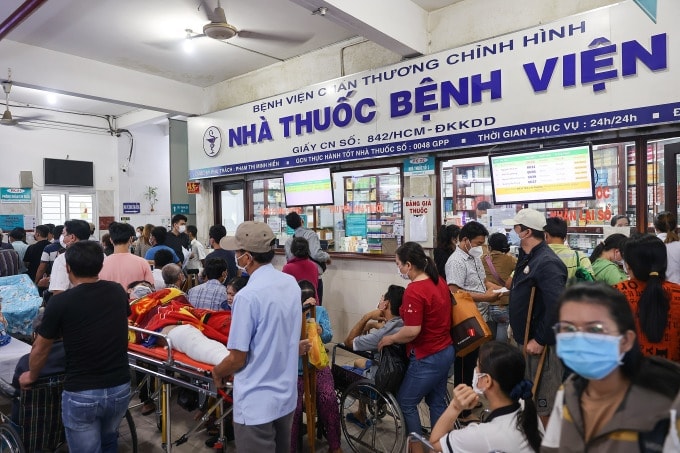The Ministry of Health allows all medical facilities to use drugs in the same health insurance list instead of classifying prescriptions for patients according to hospital class as is currently the case.

This is a new regulation in Circular 37 guiding payment for pharmaceutical drugs, biological products, radioactive drugs and tracers covered by health insurance. This Circular was issued by the Ministry of Health on November 16, effective from January 1, 2025.
On the morning of November 19, MSc. Vu Nu Anh, Deputy Director of the Health Insurance Department (Ministry of Health), said that drugs are always an important component and account for a large proportion of the total cost of medical examination and treatment under health insurance. Currently, the list of drugs and regulations on health insurance payment are implemented according to Circular No. 20/2022, but there are some problems that need to be revised, supplemented, and adjusted to suit the actual situation. Therefore, the Ministry of Health issued Circular 37 to remove difficulties for hospitals and facilitate patients.
Medicines are currently used and paid for by health insurance at medical examination and treatment facilities according to hospital levels including special level, level I, level II, level III and level IV; technical professional levels including central, provincial, district and communal levels. This causes patients treated at lower levels to suffer disadvantages. Now, with the new circular, the Ministry of Health has revised the structure of the list applicable to pharmaceutical and biological drugs by removing the column classifying the hospital using the medicine. This means that all medical facilities can use health insurance drugs equally for patients without having to base on level or level anymore. For example, commune-level medical facilities can provide health insurance drugs to patients examined and treated there according to the list like district and provincial hospitals.
"Not dividing the drug list by hospital class has advantages," said MSc. Nu Anh, explaining that medical facilities can use all drugs in the list that are appropriate to their scope of professional activities, diagnosis and treatment guidelines, regardless of hospital class or technical expertise level.
Ms. Anh said that the new regulation aims to encourage medical facilities to develop their expertise and attract human resources, ensuring fairness in access and payment of health insurance for drugs. The new regulation also creates conditions for the development of grassroots healthcare, limiting patients from being treated at higher levels, causing overload.
The new circular also adds regulations on payment instructions for drugs at commune health stations for chronic patients, or drugs for chronic diseases when patients are hospitalized for other diseases. In special cases or when there are natural disasters, wars, or catastrophes, patients are also given flexibility in paying for health insurance.
The Ministry of Health assessed that these new regulations create conditions for medical examination and treatment facilities to pay for drug costs that were not previously paid due to the lack of specific guidance. The rights of health insurance participants are guaranteed, while at the same time creating a financial mechanism to promote the development of medical examination and treatment facilities.
TH (according to VnExpress)